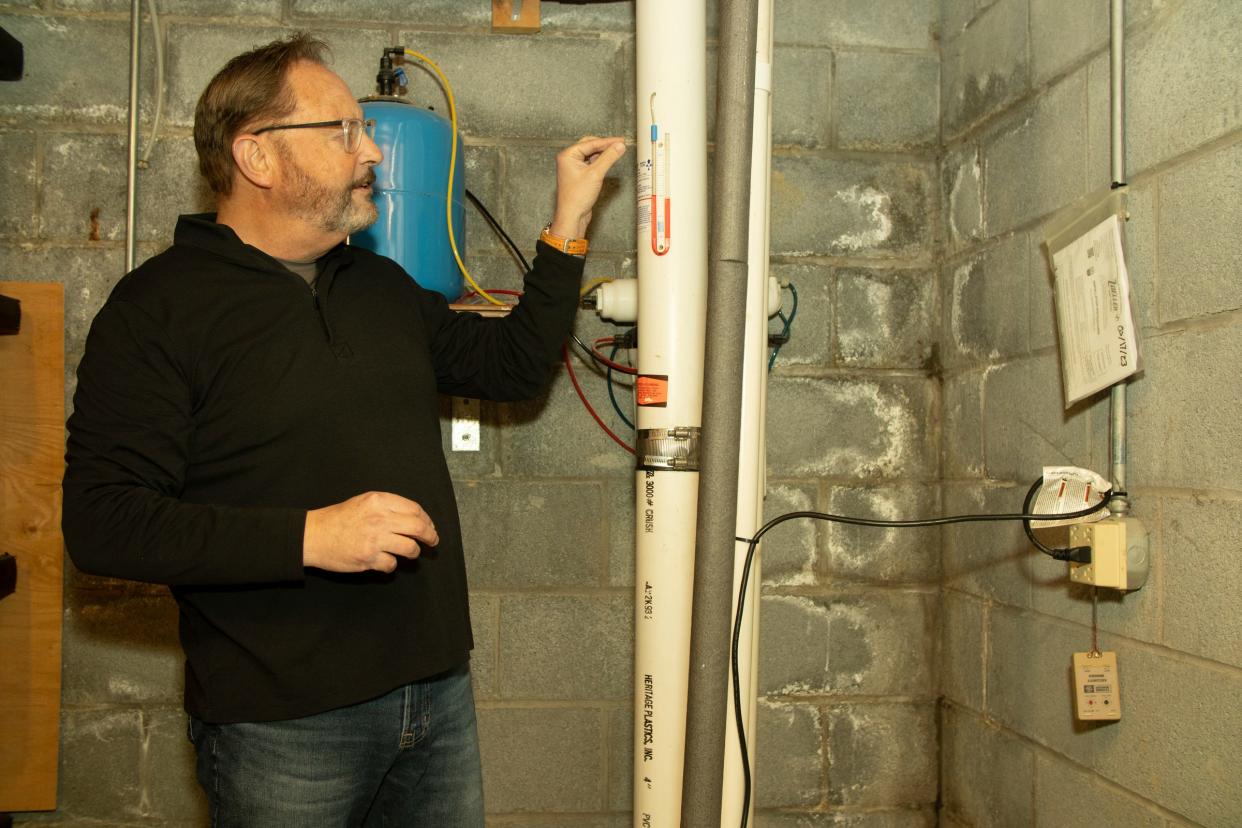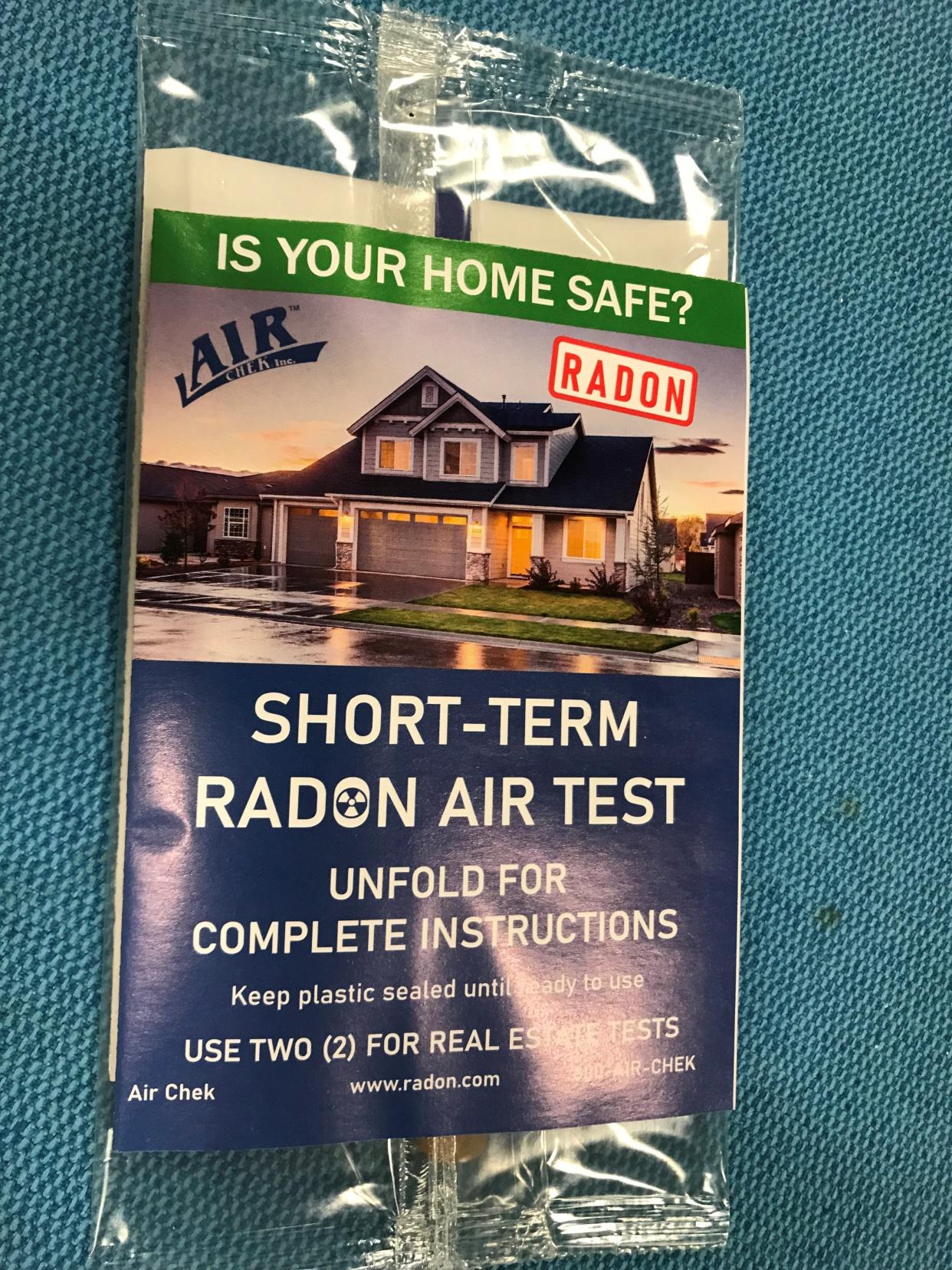Your Michigan basement could harbor lung cancer risk — but DIY detection kit is free, easy
Of all the physical harms that lurk these days — from car wrecks to virus strains to micro-bits of plastic in food — here’s one that’s not a biggie. That is, it’s not a biggie unless …
You have a home office or business in your basement where you spend hours a day
You have a basement rec room, movie room, or man cave in frequent use
You homeschool children in your basement, day after day
Someone sleeps in your basement, night after night.
If any of these is true, then this hazard just might be a biggie. You should check your basement for an invisible threat that causes lung cancer, even in nonsmokers. In those who do smoke, this threat sends lung cancer risk up by 10 to 20 times, according to Manhattan-based Memorial Sloan Kettering Cancer Center, named after two Michigan giants of GM history. What used to be an obscure eco-hazard, discovered in uranium miners in the 1950s, should get more attention these days, as Americans spend more time in their basements — for work, relaxation, homeschooling, or sleeping.
If that's you, you may be inhaling radon. About 25% of U.S. basements have a risky level of odorless radon gas, which seeps in from surrounding soil. Radon is found in all 50 states and all 83 counties of Michigan. It gets into tidy new mansions as well as ramshackle old homes. It’s found in traditional basements but also in “lower level” living spaces, where sliding doors open to face luxurious patios and private lakes. It has even been detected on the first floor of houses built on slabs.

There’s an easy way to learn if your home is hiding this threat. Give your basement a do-it-yourself radon test. Odds are three out of four that your basement is below the dangerous level. But why not check? With so many health concerns vexing the new year, this one’s quick, easy, and cheap to cross off your worry list. And winter is the ideal time for radon testing because windows and doors are shut most of the time, causing radon to accumulate. That makes it easier to detect.
To test a basement, obtain the simplest type of test kit. They’re available free or may cost $5 to $10 at county health departments all over Michigan. They’re also available online for $10 to $20. The Free Press bought several kits from the Oakland County Health office in Southfield. The same kits, called “Short-Term Radon Air Test,” sell online for $17.95 each at www.radon.com, where you can see a video showing how to use one.

There’s not much to it. According to the video, just hang the test kit's small envelope of activated charcoal from your basement ceiling, "at breathing level" and away from drafts. Leave it for three to seven days, picking a spot where you or your family members spend the most time, such as a work-at-home desk or a sleeping area. Next, seal the envelope, mail it to a North Carolina testing lab already listed on the envelope with postage paid, and then await results. To improve the accuracy, once you decide to test, try not to dawdle.
“Seal up that kit right away and send it. Don’t just toss it on a counter and let it sit because the radon atoms will escape,” throwing off the results, said Leslie Smith III, a radon specialist for the Michigan Department of Environment, Great Lakes, and Energy. To understand Smith’s advice about escaping atoms, know that radon gas is radioactive. It flows from the natural decay of uranium, “found in all rocks and soils,” said the World Health Organization.
But the distribution of uranium is uneven. That means radon may be barely detected in basements at one end of a street yet reach hazardous levels at the other end.
State health officials are “trying to dispel the myth people have that ‘there’s no radon in my ZIP code.’ It’s all over Michigan,” Smith said, adding: “Oakland County is a prolific area” for testing. When contractors paint foundation walls and seal basement floors, they may keep out some radon, but “that still doesn’t assure that radon won’t enter — you have to test to be sure,” Smith said.
Mailing in the envelope from your home test will bring back a lab report saying whether that basement is below the hazard level — true in about 75% of Michigan basements, Smith said — or that it needs a long-term test. That can be done with a long-term tester, sold online starting at $30. Those tests are done over three months to a year, he said.
“If repeated, long-term testing shows high levels, we’d advise taking steps to overcome the problem,” Smith said. That means adding a special ventilation system designed to pump basement air to the outside and bring in fresh air, known to health experts as a radon mitigation system, and typically costing $800 to $1,500, Smith said.
Michigan doesn’t regulate the installation of these systems. The state “currently does not license, certify, or regulate radon professionals, or the mitigation systems they install,” warns the radon advice at Michigan.gov. For the next best thing, Smith and his colleagues encourage Michiganders to hire installers who have been certified by professional groups with any of the following acronyms: NRSB, NRPP, or AARST. Those stand for the National Radon Safety Board, the National Radon Proficiency Program, and the American Association of Radon Scientists and Technologists.
One metro Detroit firm that lists all three on its website is Troy-based Peak Environment. Americans are spending far more time in their basements, Peak Environment owner David Scott said. During and after the COVID-19 pandemic, “people started investing a lot of money into their basements, and that is causing a lot of people to call us” when homeowners grow worried about radon, Scott said. The January-February issue of AARP Bulletin, from what used to be called the American Association of Retired Persons, suggests converting "a corner of the basement into an exercise space you'll actually use."
Another factor is the improved windows that homeowners buy to replace drafty, old windows, Scott said, because "the new ones are tight, so that keeps the radon trapped in the basement." One of his customers is Dr. Laura Eckles, of Bloomfield Township. Eckles is a retired dentist who says she is health-conscious about indoor air quality. Her home’s radon system was installed more than 20 years ago, but she calls on Scott’s company for regular checkups.
Scott stopped by last week to view the system in Eckles’ basement, where a white plastic pipe sucks radon gas from beside the sump pump, goes through the ceiling, and, ultimately, out the roof. Viewing a glass tube on the side of the pipe, called a manometer and filled with red liquid, gave Scott an instant confirmation that the system was providing proper airflow. Another pipe brought in fresh air from outside. Not far away was a basement bedroom.
“Without this system, the radon level would be pretty elevated for anyone sleeping there,” Scott said. Occasional exposure would be harmless. But anyone using the basement bedroom year after year would begin to invite a health risk. Radon is considered responsible for about 21,000 lung cancer deaths every year, with about 2,900 of these deaths occurring among people who have never smoked, according to the U.S. Environmental Protection Agency.
Scott said he likes to check the operation of residential systems at least every other year. Even in houses where a short-term test finds no risk, and thus no need for a mitigation system, it's smart to test again. Do it every two years, says the state of Michigan's radon advisory because a home's foundation can shift to allow more radon to enter or an initial test may be inaccurate.
People shouldn’t be afraid of radon, but “you should manage it,” Scott said.
Contact Bill Laytner: blaitner@freepress.com
This article originally appeared on Detroit Free Press: DIY radon test kit can be free, easy: How to test your Michigan home
